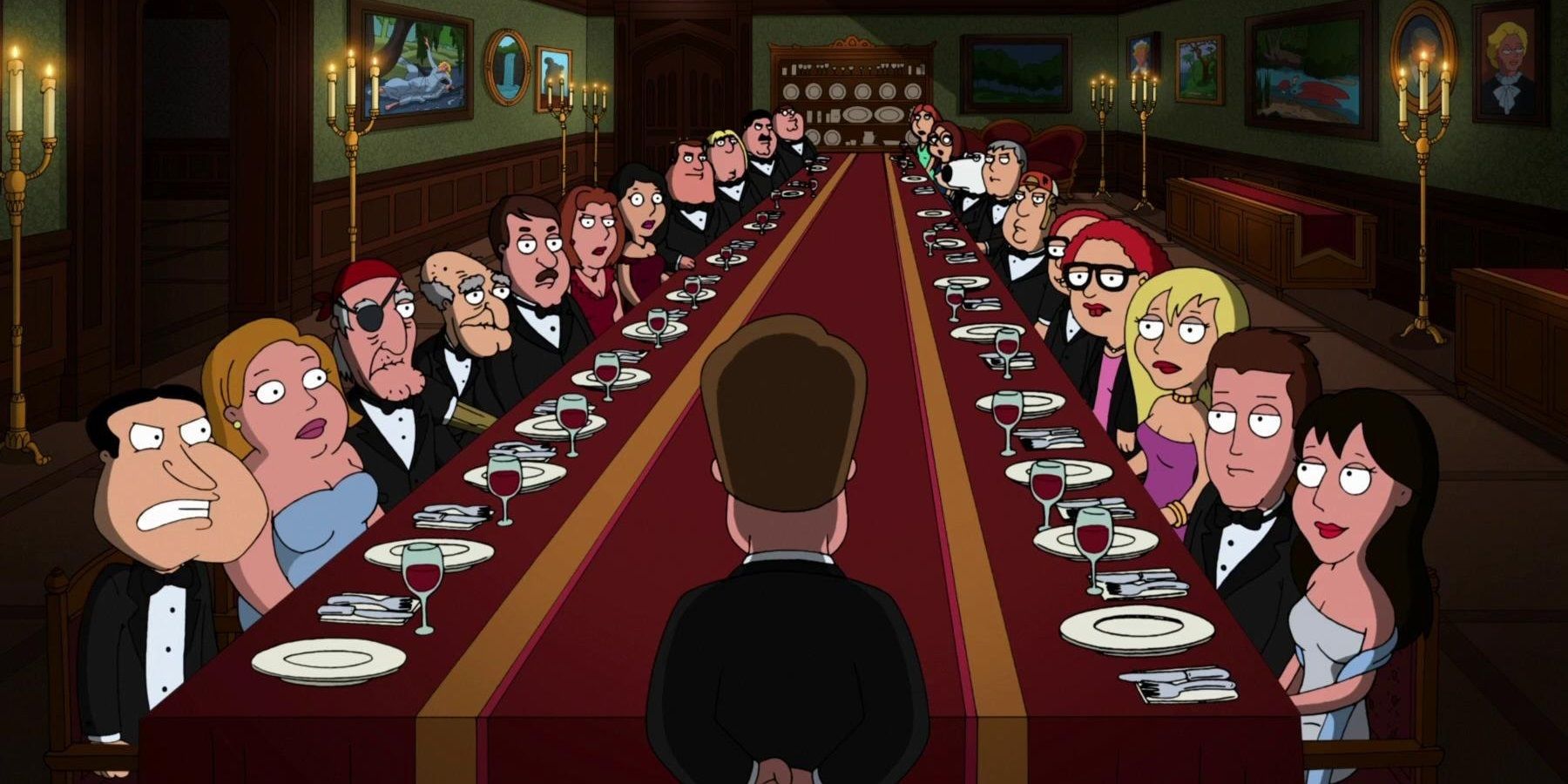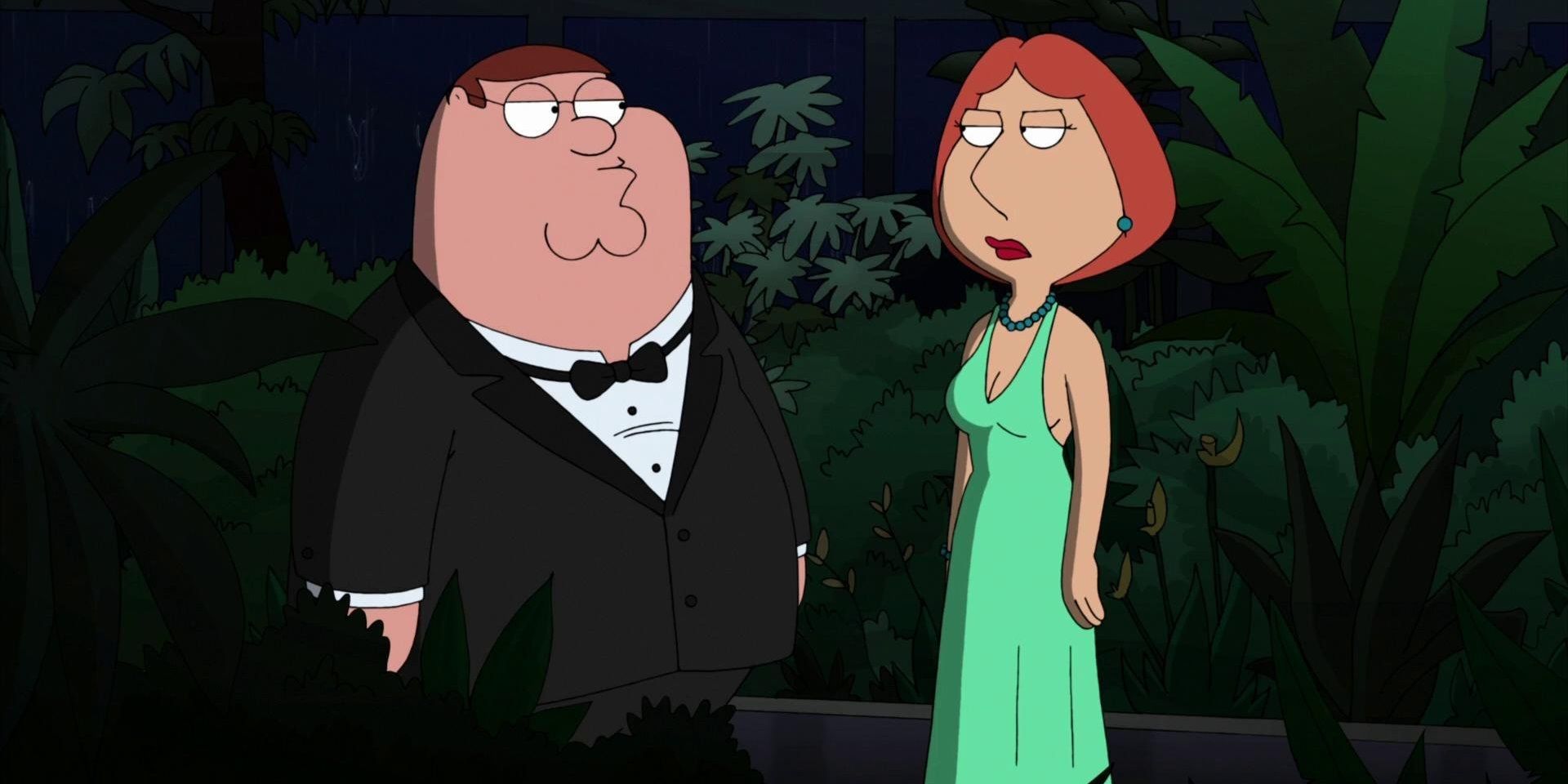Family Guy Clue and Then There Were Fewer Online Free
Seth MacFarlane'southward decidedly adult-oriented cartoon Family Guy has amassed a huge fanbase, simply it'southward frequently derided by critics for its focus on non-sequiturs and lack of real plotting, which has been perceived as lazy writing. The show'southward refusal to conform to TV traditions is actually one of the reasons its fans tune in every calendar week, although anybody can agree Family Guy could do with less Conway Twitty (or at to the lowest degree shorter clips).
Warts and all, Family unit Guy's unconventional arroyo has fabricated it a refreshing counterpoint to the residuum of the comedies on the air, and the writers accept notwithstanding managed to pull a handful of episodes out of the bag that caught critics' attention. "Road to the Multiverse" predated Rick and Morty'due south interdimensional adventures, "Blue Harvest" transplanted the show's dearest characters into the familiar narrative framework of Star Wars for the best spoof of a galaxy far, far away since Spaceballs, and quieter dialogue-driven episodes like the special 150th episode "Brian & Stewie" always arrive as a surprising subversion of the series' usual style.
I of the strongest episodes in Family unit Guy's storied history – and ane of the few with a real plot – is its hour-long flavor ix premiere "And Then In that location Were Fewer." It'southward a spot-on spoof of Agatha Christie murder mysteries (and the movie Inkling) in which the Griffins are invited to a mysterious dinner party at an island manor. The host turns out to exist a born-again James Woods, who wants to make amends with all the people he's wronged. The evening takes a deadly turn when the guests start getting picked off one by one – with the first target being Woods himself. Since everyone at the dinner table was invited in that location because Woods ruined their lives, everyone's a suspect.

This plot signal was taken from the episode'due south namesake, Christie'due south masterfully crafted thriller Then In that location Were None. In Then There Were None, eight people are invited out to a small, isolated isle off the coast of Devon. While they expect for the arrival of their hosts Ulick Norman Owen and Una Nancy Owen (the mystery genre's answer to Godot), they start getting murdered in quick succession. Christie establishes that they all accept dark secrets, and meticulously stages each murder to requite the right people alibis and the wrong people motives.
It should come up as no surprise that the mystery at the center of Family Guy'southward "Then There Were Fewer" isn't quite every bit finely tuned as an Agatha Christie literary masterpiece. No mystery writer in the decades since Christie defined the whodunit genre has managed to match her creative prowess (although Rian Johnson's Knives Out was crawly). The twist catastrophe of "And Then In that location Were Fewer" isn't as mind-blowing as a Christie twist, which feels similar the final piece of a jigsaw puzzle existence pushed into place, but the story leading upward to that reveal keeps the audience guessing.
Every time a suspect emerges, in that location'south another murder in a different room that clears their name. It may non be as sharply structured as a Christie novel, but information technology's just equally unpredictable. And every bit a comedy, it'south able to utilise on-the-nose humor to preserve the surprise. In one scene, as a character is being approached by the killer in a point-of-view shot, he says, "Oh my God, it's you, the human or woman who'due south been killing everybody!"
It's appropriate that "And And so There Were Fewer" was the commencement Family Guy episode to be presented in HD and 16:ix aspect ratio, because information technology's 1 of the show's most cinematic installments. The virtual camera swoops around James Wood' creepy mansion, the crashing waves surrounding the island look similar real water, and Walter Murphy's Emmy-nominated score perfectly punctuates each shocking plot development with tense musical accessory.

According to the DVD commentary, the episode originated from a text that MacFarlane sent to Family Guy showrunner and executive producer Marking Hentemann that simply read, "Murder mystery." A mutual problem with Family Guy'south worst episodes is that it'll introduce a juicy premise or enhance an interesting signal and and then neglect to really dig into them or mankind out the ideas. And so, it was a nice change of step that when the show tackled a murder mystery, information technology went the whole hog and permanently killed off a bunch of supporting characters. The absurdist fashion of Family Guy (and animation in general) means that there are rarely consequences. If Peter cuts off his arm to serve a gag in one scene, his arm is reattached by the next scene. But the murder victims in "And And then There Were Fewer" stayed dead in subsequent episodes. The shocking events at James Woods' mansion became part of the Family Guy catechism.
"And Then In that location Were Fewer" may non be Family unit Guy's all-fourth dimension greatest installment – it faces potent competition from "PTV," "Back to the Pilot," and a handful of "Road to..." episodes – but information technology's definitely 1 of the bear witness's strongest outings. Everyone who doesn't believe Family unit Guy is capable of pulling off engaging storytelling on top of a steady stream of absurdist gags should cheque it out.
Most The Writer
Source: https://gamerant.com/family-guy-murder-mystery-best-episode/

0 Response to "Family Guy Clue and Then There Were Fewer Online Free"
Post a Comment